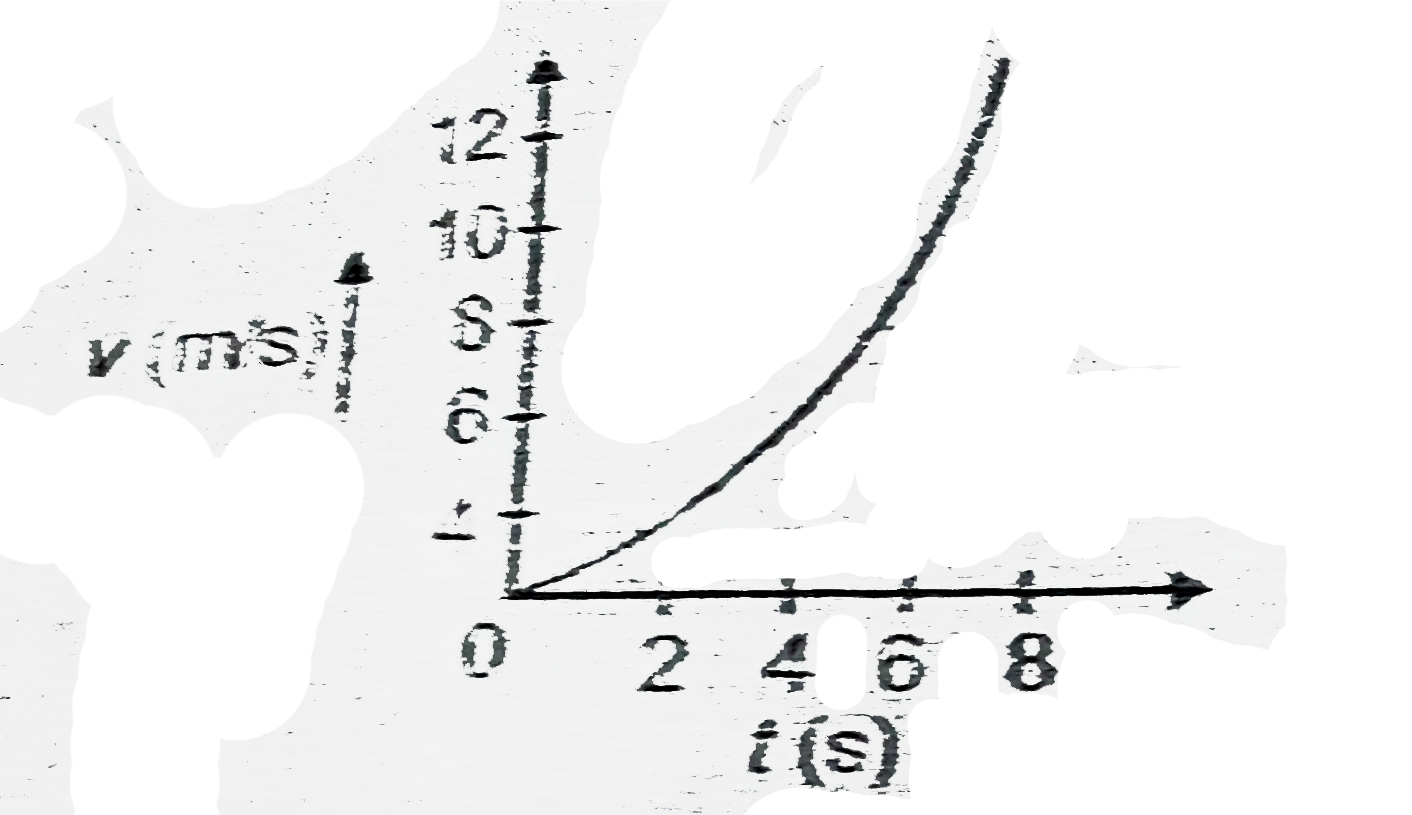If the relation between acceleration and time for an object is given by
a=2t+4t2
Calculate the position of object from the origin at t = 4 s. Assume the object to be at rest at t=0.
The correct Answer is:106.6 m.
To solve the problem step by step, we will follow the process of integrating the acceleration to find the velocity, and then integrating the velocity to find the position.
Step 1: Write the given equation for acceleration
The acceleration a is given by:
a=2t+4t2
Step 2: Relate acceleration to velocity
Acceleration is the rate of change of velocity with respect to time:
a=dvdt
Thus, we can write:
dvdt=2t+4t2
Step 3: Integrate to find velocity
We will integrate both sides with respect to t:
dv=(2t+4t2)dt
Integrating gives:
v=∫(2t+4t2)dt
Calculating the integral:
v=∫2tdt+∫4t2dt=t2+43t3+C
Since the object is at rest at t=0, we have v(0)=0:
0=0+0+C⟹C=0
Thus, the velocity equation simplifies to:
v=t2+43t3
Step 4: Relate velocity to position
Velocity is also the rate of change of position:
v=dxdt
Thus, we can write:
dxdt=t2+43t3
Step 5: Integrate to find position
We will integrate both sides with respect to t:
dx=(t2+43t3)dt
Integrating gives:
x=∫(t2+43t3)dt
Calculating the integral:
x=∫t2dt+∫43t3dt=t33+412t4+C
Simplifying gives:
x=t33+13t4+C
Since the object starts from the origin at t=0, we have x(0)=0:
0=0+0+C⟹C=0
Thus, the position equation simplifies to:
x=t33+13t4
Step 6: Calculate position at t=4 seconds
Now we substitute t=4 seconds into the position equation:
x=433+13(44)
Calculating each term:
x=643+2563=3203≈106.67 meters
Final Answer
The position of the object from the origin at t=4 seconds is approximately:
x≈106.67 meters
The acceleration a is given by:
a=2t+4t2
Acceleration is the rate of change of velocity with respect to time:
a=dvdt
Thus, we can write:
dvdt=2t+4t2
We will integrate both sides with respect to t:
dv=(2t+4t2)dt
Integrating gives:
v=∫(2t+4t2)dt
Calculating the integral:
v=∫2tdt+∫4t2dt=t2+43t3+C
Since the object is at rest at t=0, we have v(0)=0:
0=0+0+C⟹C=0
Thus, the velocity equation simplifies to:
v=t2+43t3
Velocity is also the rate of change of position:
v=dxdt
Thus, we can write:
dxdt=t2+43t3
We will integrate both sides with respect to t:
dx=(t2+43t3)dt
Integrating gives:
x=∫(t2+43t3)dt
Calculating the integral:
x=∫t2dt+∫43t3dt=t33+412t4+C
Simplifying gives:
x=t33+13t4+C
Since the object starts from the origin at t=0, we have x(0)=0:
0=0+0+C⟹C=0
Thus, the position equation simplifies to:
x=t33+13t4
Now we substitute t=4 seconds into the position equation:
x=433+13(44)
Calculating each term:
x=643+2563=3203≈106.67 meters
The position of the object from the origin at t=4 seconds is approximately:
x≈106.67 meters
Topper's Solved these Questions
- BOOK - AAKASH INSTITUTE ENGLISHCHAPTER - MOTION IN STRAIGHT LINEEXERCISE - Assignment (SECTION - A)50videos
MOTION IN STRAIGHT LINE
- BOOK - AAKASH INSTITUTE ENGLISHCHAPTER - MOTION IN STRAIGHT LINEEXERCISE - Assignment (SECTION - B)19videos
MOTION IN STRAIGHT LINE
- BOOK - AAKASH INSTITUTE ENGLISHCHAPTER - MOTION IN STRAIGHT LINEEXERCISE - Assignment (SECTION - J)2videos
MOTION IN STRAIGHT LINE
- BOOK - AAKASH INSTITUTE ENGLISHCHAPTER - MOTION IN A STRAIGHT LINEEXERCISE - ASSIGNMENT (SECTION - D)15videos
MOTION IN A STRAIGHT LINE
- BOOK - AAKASH INSTITUTE ENGLISHCHAPTER - MOVING CHARGE AND MAGNESIUMEXERCISE - SECTION D16videos
MOVING CHARGE AND MAGNESIUM
Similar Questions
The relation between the acceleration and time for an object is given below. Calculate the velocity with which the object is moving at t = 1 s.
a=3t−4t2View SolutionThe velocity of an object is changing with time and relation is given by the following equation.
v=2t+3t2
Calculate the position of the object from the origin at t = 2 s.
Assume particle to be at origin at t = 0View SolutionIf acceleration of a particle at any time is given by a=2t+5
Calculate the velocity after 5 s, if it starts from restView SolutionThe displacement x of an object is given as a function of time x=2t+3t2
Calculate the instantaneous velocity of the object at t = 2 sView SolutionThe displacement s of an object is given as a function of time t
s=5t2+9t
Calculate the instantaneous velocity of object at t = 0.View SolutionThe velocity-time graph of an object is given below. Calculate the average acceleration of the object in the time interval of 4 s to 6 s.
 View Solution
View SolutionRelation between displacement x and time t is x=2−5t+6t2, the initial acceleration will be :-
View SolutionThe displacement x of an object is given as a funstion of time, x=2t+3t2. The instantaneous velocity of the object at t = 2 s is
View SolutionThe velocity of an object is given by →v=(6t3ˆi+t2ˆj)m/s . Find the acceleration at t = 2s.
View SolutionThe position of an object is given by →r=(9tˆi+4t3ˆj) m. find its velocity at time t= 1s.
View Solution

